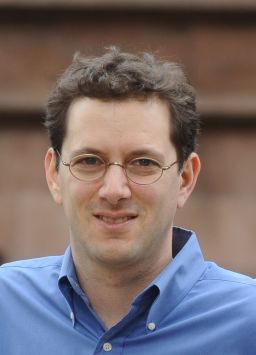Editor’s Note: Adam H. Sobel, a professor at Columbia University’s Lamont-Doherty Earth Observatory and Fu Foundation School of Engineering and Applied Science, is an atmospheric scientist who studies extreme events and the risks they pose to human society. Sobel is the host of the climate science podcast “Deep Convection” and the author of “Storm Surge,” a book about Superstorm Sandy. Follow him on Twitter: @profadamsobel. The opinions expressed in this commentary are his own. View more opinion on CNN.
The winter storms and Arctic deep freeze that have blanketed the West, Midwest and South are still threatening lives and spreading misery, particularly in Texas.

But even as millions suffer with access to power, water and heat, the political debate over causes and blame is hot and getting hotter. The icy disaster is already a screen on which old arguments are being projected. A few are substantive, based on legitimate disagreements. The others are phony, provoked by bad-faith propaganda.
Extreme cold events like this are often held up by those who deny the reality of climate change – like former President Donald Trump – as evidence for their position. This is nonsense, of course. The scientific consensus on human-induced global warming has never meant the permanent end of winter or of deadly cold snaps.
I’m sure some politicians somewhere are still making these same tired claims, some in the news media have lately been telling the opposite story – that cold extremes like this are, counterintuitively, more likely due to global warming. I think those accounts distort the science. But there is a good-faith argument to be had in this case.
For about the last decade, a number of climate scientists have argued that while the planet overall has indeed been getting warmer, extreme cold snaps are now more likely. I don’t think they are right, but I’m not 100% sure they are wrong, and at least they are making an honest case.
The argument goes like this: As the Arctic warms up, its temperature gets closer to that of lower latitudes. The temperature difference between polar and southerly latitudes is tightly linked to the strength of the jet stream, the powerful bands of mainly westerly winds that circle the globe high in the atmosphere. A warmer Arctic means a weaker jet stream. A weaker jet stream is also wavier, the way a loosened rubber band jiggles more easily.
If the jet bends all the way to the Gulf of Mexico, it brings Arctic air with it in what is also called the polar vortex. Even though that air is warmer than it used to be, it’s still very cold for Texas. So if global warming makes these events happen more often, then Texas can get hit with more extreme cold snaps even though it is warming over time like everywhere else.
Many of my peers and I find this case unconvincing, even though parts of it – like that the Arctic warms the most – are certainly true. The physical arguments about why the jet stream should be expected to get wavier don’t hold up, and the statistics show real cold snaps are getting less frequent and severe, not more. But the matter isn’t settled – there’s a lot we don’t understand about the jet stream – so there is an ongoing, legitimate scientific debate here, as opposed to the pure bad-faith nonsense of the senator snowball types.
The Texas deep-freeze and colossal power failures have produced a new line of disingenuous nonsense. It’s about the reliability of different energy sources rather than the physics of weather. The claim is that the blackouts are happening because the state has too much renewable energy, and in particular because wind turbines are freezing.
Not true. While some wind turbines did freeze, the majority of the lost power was from coal, natural gas, and nuclear plants that went down. Wind account for only 10% of Texas’s power during winter. But Fox News and its ilk are eagerly pushing the false narrative that renewable energy leads to outages.
It’s true, of course, that solar and wind are, in general, more intermittent energy sources than fossil fuels, since there are times when the sun doesn’t shine and the wind doesn’t blow. Fixing this means adding more power storage and reliable, long-range transmission lines to bring power where it’s needed. It also should include some capacity from nuclear or other sources. All this will require a lot of public investment in new technology and infrastructure, and there’s no shortage of legitimate debates to be had over how to do that.
Get our free weekly newsletter
There should also be real debates about how best to prepare for extreme weather.
All these substantive climate debates are happening, of course, in the real world. But a substantial fraction of our elected officials as well as certain media outlets and parts of our population as a whole have checked out of the reality-based community. They prefer to remain committed to climate denialism and their beloved fossil fuels–making it all the more difficult to respond to the very real challenges that events like this present.

